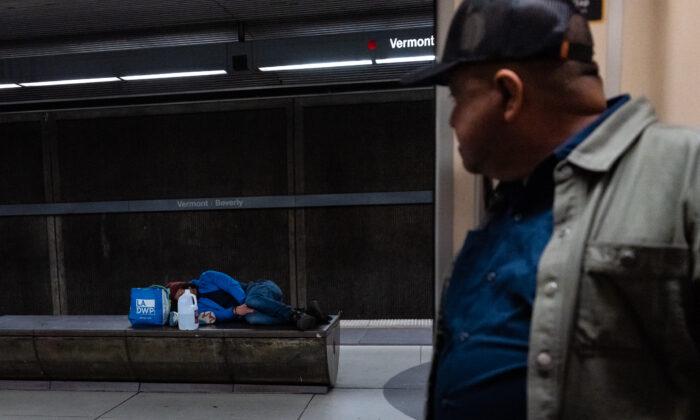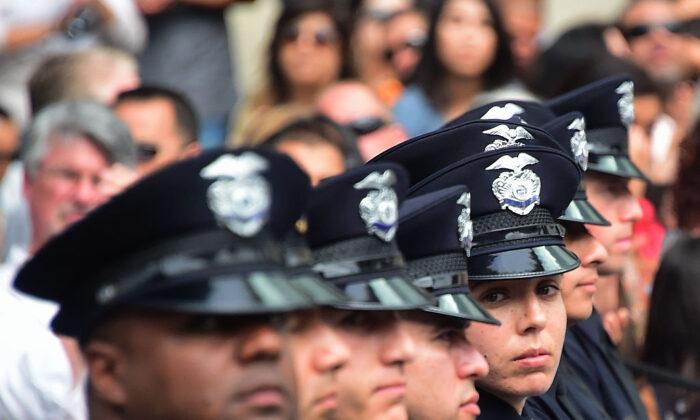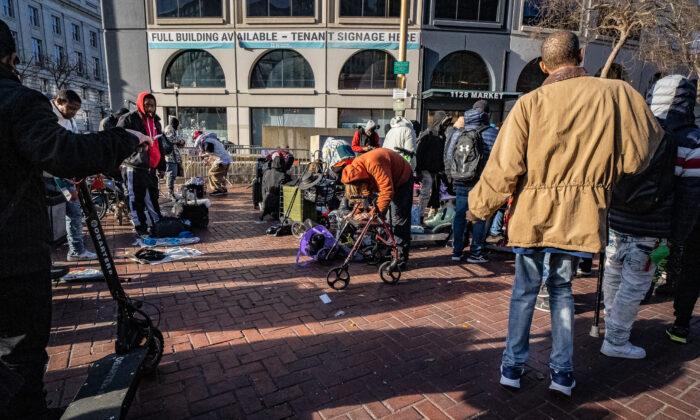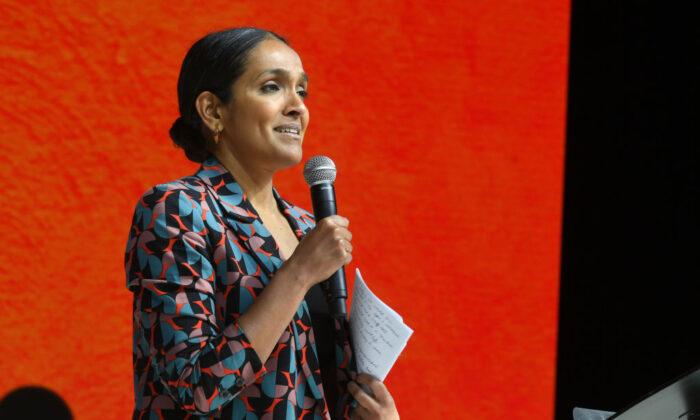Los Angeles County is grappling with a homelessness crisis unlike any other in the United States, and which could top 100,000 by the time it hosts the 2028 Olympic Games if current trends continue, according to a report by international consulting firm McKinsey and Co.
In the early days of the Los Angeles city election cycle, Mayor Karen Bass said during one of the debates that she believes “when the Olympics comes in 2028 and I’m mayor, there won’t be encampments.”
With an estimated population of 69,000 homeless people countywide, Los Angeles has overtaken New York to become the home of the nation’s largest homeless population, and the crisis continues to grow, the March report by McKinsey & Co. found.
The county’s homeless population is increasing by 20 people daily. If that proportion holds, more than 10,000 children could be homeless by the time of the 2028 Olympic Games, according to the report, which noted that 10 percent of the homeless population are minors.

In the city of Los Angeles, there are around 42,000 homeless, according to the 2022 point-in-time count. That’s up 2 percent from 2020.
The city’s budget to address homelessness swelled to $1 billion in 2021 from $100 million in 2015, while the homeless population and tent encampments keep growing.

Bass just allocated $1.3 billion of the city’s 2023–24 budget to address homelessness by building more housing and purchasing hotels and motels. However, not all agree with the move, citing a greater need to address mental illness and substance abuse before housing.
Meanwhile, amid major federal funding increases to the Los Angeles Homeless Services Authority (LAHSA)—the lead agency dealing with the homeless crisis, which saw funding rise nearly 13-fold to about $808 million in 2022 from $63 million in the 2014–15 financial year—the number of people experiencing homelessness in L.A. County rose by about 56 percent during the same period.
That’s in stark contrast to New York City, which recorded an 18 percent decline in homelessness over the same period. New York currently has about 68,000 homeless people.
The consequences of homelessness in Los Angeles are dire, with a daily average death rate of more than five among the homeless, according to the Los Angeles Department of Public Health. If that mortality rate continues, the report estimates an additional 16,000 deaths by 2028.
The report also highlights that more than 40 percent—or about 29,000 people—are chronically homeless, referring to individuals who experience long-term or repeated episodes of homelessness that typically last for a year or more.
That population—which the report notes are “six times more likely” to be mentally ill—requires more spending on support services because of physical disabilities and substance use disorders, which further exacerbate the crisis. Bass’s city budget allocates roughly $24 million for substance abuse treatment beds.

Homeless individuals in Los Angeles County are highly likely to die from fentanyl overdoses, rising to 45 percent since the onset of the COVID-19 pandemic from 27 percent, according to the report.
During the pandemic, drug overdoses accounted for more fatalities among the homeless than the next three largest causes of death combined, including coronary heart disease, COVID-19, and traffic injuries.
Finding a solution has proven no easy feat. There may be too much bureaucracy when it comes to the county’s decision-making over how to handle the crisis—with 88 cities and more than 550 elected officials—according to the report.
Additionally, L.A. County’s large geographic footprint—it’s larger in area than Delaware and Rhode Island combined—further hampers efforts to effectively address the crisis.

The report suggests enlisting the support of local businesses as part of a solution.
The private sector, which employs nearly 88 percent of the workforce in the county, should prioritize the hiring of homeless people, since the majority of the homeless population in Los Angeles have had prior employment, the report states.
It’s unclear if Bass’s office will change the plan for how to address the homeless population as the Olympics draw nearer.





